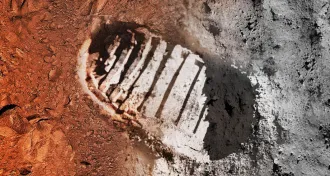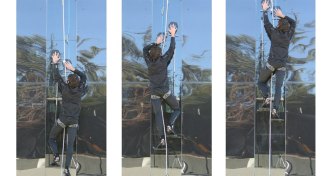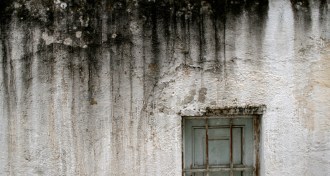Uncategorized
-
 Cosmology
CosmologyGalaxies may be aligned across 1 billion light-years
Powerful plasma jets from cores of galaxies seem to mysteriously align with one another and hint at an unknown mechanism shaping galaxy groups.
-
 Neuroscience
NeuroscienceAfter injury, estrogen may shield the brain
Estrogen helps to prevent some of the chronic inflammation that occurs after brain injury.
-
 Planetary Science
Planetary ScienceSetting sights on Mars — a half-century ago
Fifty years ago, the United States turned its eyes toward Mars and set a goal of sending humans as soon as possible.
-
 Neuroscience
NeuroscienceBreathing returns to paralyzed rats
Scar tissue–busting enzyme plus rehabilitation therapy improves respiration long after rats’ initial spinal cord injuries.
By Meghan Rosen -
 Life
LifeNorovirus can play protective role in mice
In mice, viral infection can help intestines develop, strengthen immune system.
-
 Neuroscience
NeuroscienceAreas people like to be caressed match up with nerve fibers
A caress in a sweet spot at the right speed activates nerve fibers tied to social touch.
-
 Planetary Science
Planetary SciencePlanets stake their claim around infant star
At the center of the newly released telescope image is HL Tau, a star located about 450 light-years away in the constellation Taurus. A dense disk of gas and dust surrounds the star, which is a youthful million years old.
-
 Life
LifeSprings bring gecko stickiness to human scale
Springs of a stretchy alloy let gecko-inspired adhesives work at human scales to climb glass walls or grab space junk.
By Susan Milius -
 Neuroscience
NeuroscienceProtein production prevents sleep-loss forgetfulness
Boosting levels of certain proteins in mice prevented memory problems associated with sleep deprivation.
-
 Health & Medicine
Health & MedicineAspirin’s heart benefits not a slam dunk
No survival gain found in people age 60 and over who took daily dose of aspirin.
By Nathan Seppa -
 Psychology
PsychologyRight questions could help spot devious air passengers
Training airport security agents to ask detail-oriented questions of travelers may help unmask liars.
By Bruce Bower -
 Neuroscience
NeuroscienceMold may mean bad news for the brain
Living with mold isn’t good for your lungs. A study in mice shows that mold exposure may also cause inflammation that is bad for the brain.